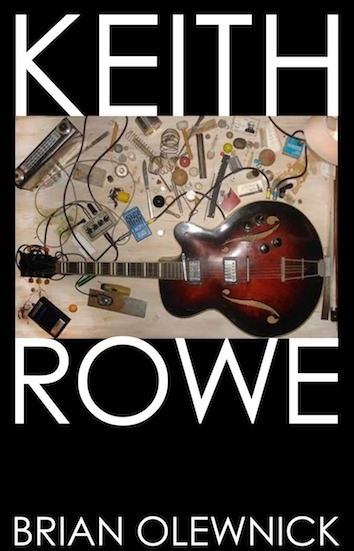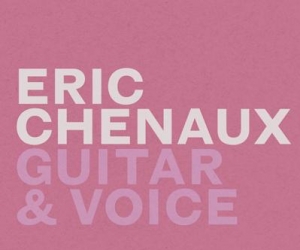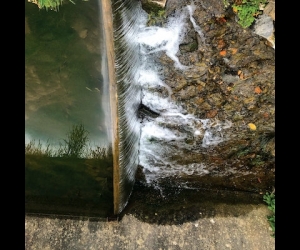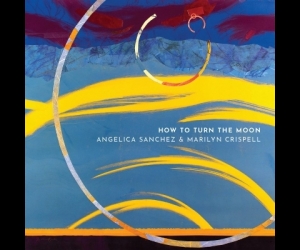
At some point during the 1960s (the exact date is unclear, but happenings were starting and the Fab Four were still singing “yeah yeah yeah” on their radio hits) a young art-school graduate began to do horrible and wondrous things to a guitar. He took a vow to eschew tuning, for instance, leading to pitches that could not be found in any scale, tempered or otherwise. He’d base his solos, within the framework of Mike Westbrook’s otherwise conventional jazz ensemble, on Paul Klee drawings, placing tracings of them on the top of his instrument and playing the notes where Klee’s lines intersected with the strings. He’d manipulate his guitar with springs, knives, and hand-held electrical devices, or mix random radio transmissions into his music, or turn his amplifier up to the point where even the smallest gesture resulted in waves of pulsing noise, simulating the grinding energies of urban life (predating, not coincidentally, the “industrial” music that would emerge from punk rock more than a decade later).
In time, his efforts—with Westbrook’s group and then with the collective of like-minded improvisers known as AMM—came to resemble performance art as much as any known kind of music, blending meditative focus with scarifying intensity.
“There had been a contradiction in sound for some time between what I had learned in the history of plastic arts and what I was actually doing in a jazz group,” this unfettered innovator told Avant magazine in a 1997 interview. “In the plastic arts the idea is to find out who you actually are and what you have to say, and the idea is to not be like somebody else. . . . In the plastic arts you have a list of criteria; one of the criteria is about originality and not so much an emphasis on craft and technique.”
Keith Rowe, it seems, was always an original. But even avowed admirers of his work will glean from Brian Olewnick’s weighty and exhaustively researched biography a new understanding of just how original the now-seventy-eight-year-old performer was and still remains. The book provides an invaluable explanation of how Rowe developed his entirely unprecedented approach to the guitar—and why his influence primarily has been felt second hand, through the more widely publicized efforts of acolytes such as the psychedelic-rock innovator Syd Barrett and the indefatigable improviser Fred Frith.
Olewnick’s tome is especially welcome for its comprehensive discussion of the small and nearly undocumented scene from which Rowe emerged. Like Colin Harper’s similarly revelatory John McLaughlin biography, Bathed in Lightning, it depicts the world of creative music in London during the 1960s as an active and uncommonly democratic creative crucible, inhabited by a wild mix of pop stars, unsung innovators, tragic geniuses, and charlatans. But where McLaughlin went on to become arguably the most technically fluent guitarist of his generation, Rowe quickly discarded conventional technique altogether, developing instead a palette of hitherto undiscovered sounds.
The term palette is not used lightly. Olewnick’s principal thesis is that Rowe is as much a visual artist as a musician, a painter in sound whose art-school training gave him access to such techniques as abstract expressionism, pointillism, collage, Fauvism, and indeterminacy, all of which have played a part in his music. (Unsurprisingly, he’s pursued a parallel career as a painter, although in that role his output seems to have pivoted between the extremes of hard-edged abstraction and giddy Pop.) In quote after quote, Rowe details how he has applied painterly strategies to the production of sound; beyond its purely historical merit Keith Rowe also stands as an invaluable, if anecdotal, handbook for any musician interested in transcending purely technical, mechanistic modes of playing.
As history, however, the book is at its best when it focuses on Rowe’s development and then the formation, in 1966, of AMM—initially with saxophonist Lou Gare, another Mike Westbrook alumnus, and percussionist Eddie Prévost. (Gare soon left AMM, and pianist John Tilbury, composer and multi-instrumentalist Cornelius Cardew, and others moved in and out of the ensemble over the ensuing years.)
The book begins to flag at the point in the narrative where AMM begins to falter, which in the early 2000s culminated in a seemingly irreconcilable split between Prévost and Rowe, ostensibly because of Prévost’s insistence that art have a social utility and his consequent dismissal of Rowe’s “art for art’s sake” ethos. It’s difficult to understand why two such brilliant minds couldn’t appreciate that these approaches are not mutually exclusive; Olewnick finds Prévost’s doctrinaire Marxism and acid tongue responsible for the impasse, but there’s an underlying sense that there were other, more personal dramas at play here. These may never be fully explained, but that’s wholly in keeping with music in which synchronicity and the inexplicable play such a large part.
Olewnick has done listeners an incalculable service by explaining how Rowe and his AMM colleagues created their music—and perhaps an even larger one by inviting those listeners to revisit and reexamine a body of work that to this day remains harsh, beautiful, startling, and mysterious.
KEITH ROWE: THE ROOM EXTENDED IS AVAILABLE IN THE MUSICWORKS SHOP!


